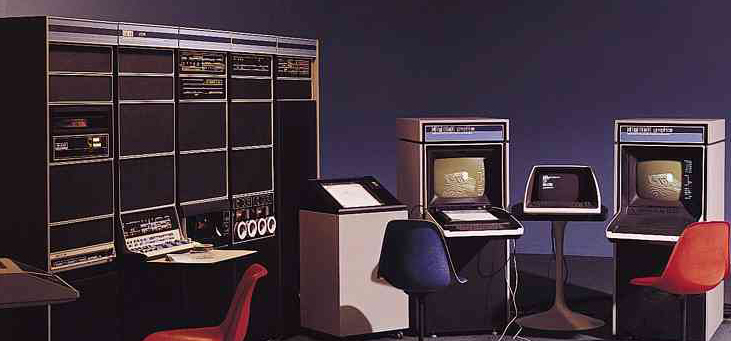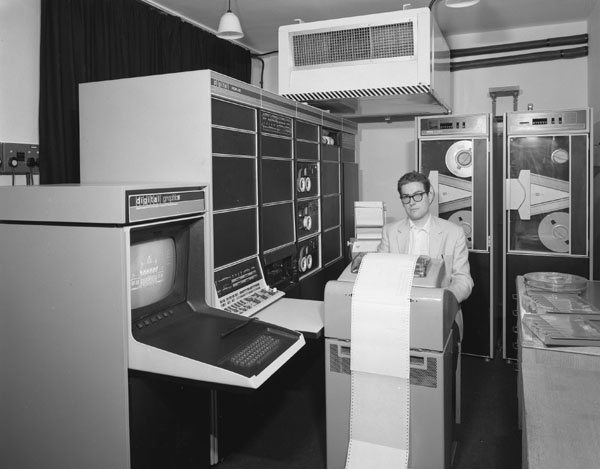


In February, 1969 a case was made for purchasing an interactive graphics system. A major application would be previewing SC4020 output. Having a small system with graphics display and magnetic tape deck, it would be possible to check SC4020 output before wasting valuable SC4020 time and processing capacity.
There had been many uses of a stand-alone DMAC pencil follower for capturing contours etc and doing this interactively would eliminate errors early on.
The people involved with literary analysis had the need to design fonts and while this was feasible off-line by defining the character formats as decks of cards, it was error prone and an interactive system would greatly speed up the production process. The person mainly interested was Susan Hockey.
It was felt that the current off-line techniques for creating simple animations was labour intensive and any ability to interact with the production process would speed up production. At the time, attempting to create 10 or more minutes of Open University animation a week was not easy.
The two front runners were an Elliott Automation system and a PDP15 system from DEC. With the prices being relatively similar, the case was initially made to purchase the British Elliott Automation system even though the display system had a relatively slow orange phosphor (which would mean previewing of animated films would not be brilliant). Just before the paper was due to go the Atlas Computer Committee, Elliott's increased the price substantially (they had forgot to add VAT) and, in consequence, it was decided to make the case to purchase a PDP15 system with a VT15 display instead. Being both cheaper and having a much faster phosphor on the display, it was more appropriate for animation previewing. The PDP15 was also the system of choice by other groups.
Bob Hopgood had to persuade Brian Oakley, then at the Department of Industry, that Atlas had a good case for a foreign purchase. The PDP15 arrived in October 1970 (without the display) and was initially installed in G18 with a local air conditioning system.

A basic system was purchased early on and gradually enhanced with a disc, additional memory, high speed interface to the 1906A and a connection to a VCS3 synthesiser.